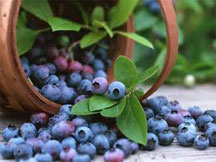The EYES Have Our Focus
By Alice Osborne
 I just got back from my optometrist. So far so good, but we have glaucoma and cataracts on both sides of the family - Grandma Jacobson lost her eyesight to glaucoma. So I'm cautious. The need to take good care of our eyes heightens as we age, don't you think? So here is some good information on how to baby our eyes, nutrition-wise - always one of the first and easiest places to start. Here are some things we need to eat more of if we focus on good eye health:
I just got back from my optometrist. So far so good, but we have glaucoma and cataracts on both sides of the family - Grandma Jacobson lost her eyesight to glaucoma. So I'm cautious. The need to take good care of our eyes heightens as we age, don't you think? So here is some good information on how to baby our eyes, nutrition-wise - always one of the first and easiest places to start. Here are some things we need to eat more of if we focus on good eye health:
 Cysteine, consumed as N-acetyl-cysteine (NAC, helps your retina stay healthy by increasing the production of the potent antioxidant gluatathione). The body can synthesize glutathoine from amino acids, but cysteine is the one component to glutathoine synthization that is somewhat uncommon in foods. Find them in meats, eggs, milk, whey protein, ricotta and cottage cheese, yogurt, red peppers, onions, garlic, brussels sprouts, broccoli, oats, granola, sprouted lentils, wheat germ.
Cysteine, consumed as N-acetyl-cysteine (NAC, helps your retina stay healthy by increasing the production of the potent antioxidant gluatathione). The body can synthesize glutathoine from amino acids, but cysteine is the one component to glutathoine synthization that is somewhat uncommon in foods. Find them in meats, eggs, milk, whey protein, ricotta and cottage cheese, yogurt, red peppers, onions, garlic, brussels sprouts, broccoli, oats, granola, sprouted lentils, wheat germ.
 Taurine - in the healthy eye, high levels of this nutrient are found in the retina. Taurine is essential for maintaining healthy vision and the regenerating worn-out visual system tissue. Find them in fish, meat.
Taurine - in the healthy eye, high levels of this nutrient are found in the retina. Taurine is essential for maintaining healthy vision and the regenerating worn-out visual system tissue. Find them in fish, meat.
 Bioflavonoids are the natural occurring yellow, red and blue pigments found in plants that protect your eyes from damage from sunlight. They are potent antioxidants that combat damage from free radicals and that appear to assist blood circulation to and within the retina that may enhance blood flow to the retina. They act in combination with vitamins to strengthen and maintain vision.
Bioflavonoids are the natural occurring yellow, red and blue pigments found in plants that protect your eyes from damage from sunlight. They are potent antioxidants that combat damage from free radicals and that appear to assist blood circulation to and within the retina that may enhance blood flow to the retina. They act in combination with vitamins to strengthen and maintain vision.
 Quercitin, Rutin Quercitin protects the eye from damage by solar radiation. In addition, it may reduce inflammation and is being investigated for use in helping reduce eye symptoms from allergens. It functions in a synergistic manner with vitamin E and with taurine. Research has indicated that the similar Rutin reduces leakage from the tiny retina blood vessels. It also is an excellent free radical fighter. Find quercitin in black and green tea, capers, apples, red onion, red grapes, citrus, tomato (organically grown tomatoes have 79% more quercetin than chemically grown tomatoes), broccoli and leafy greens, many berries and honey.
Quercitin, Rutin Quercitin protects the eye from damage by solar radiation. In addition, it may reduce inflammation and is being investigated for use in helping reduce eye symptoms from allergens. It functions in a synergistic manner with vitamin E and with taurine. Research has indicated that the similar Rutin reduces leakage from the tiny retina blood vessels. It also is an excellent free radical fighter. Find quercitin in black and green tea, capers, apples, red onion, red grapes, citrus, tomato (organically grown tomatoes have 79% more quercetin than chemically grown tomatoes), broccoli and leafy greens, many berries and honey.
 Find rutin in asparagus, citrus fruits, mulberry, cranberry, peaches, especially, and also, cherries, white grapefruit, apples, pears, grapes, red onions, green cabbage, spinach, kale, onions, and garlic.
Find rutin in asparagus, citrus fruits, mulberry, cranberry, peaches, especially, and also, cherries, white grapefruit, apples, pears, grapes, red onions, green cabbage, spinach, kale, onions, and garlic.
 Carotenoids are plant pigments that absorb blue light and that exist naturally in plants using photosynthesis, including, not only the plants that we see daily, but algae, some types of fungus and some bacteria. They are valuable antioxidants and help protect the eye from many eye diseases. Research has demonstrated that people who eat lots of carotenoids are healthier and have fewer chronic illnesses in general. Interestingly, oils in fruits and vegetables are important for absorption of carotenoids. Research has found that avocado (fruit and oil) helped in this absorption.
Carotenoids are plant pigments that absorb blue light and that exist naturally in plants using photosynthesis, including, not only the plants that we see daily, but algae, some types of fungus and some bacteria. They are valuable antioxidants and help protect the eye from many eye diseases. Research has demonstrated that people who eat lots of carotenoids are healthier and have fewer chronic illnesses in general. Interestingly, oils in fruits and vegetables are important for absorption of carotenoids. Research has found that avocado (fruit and oil) helped in this absorption.
 Bilberry is the European cousin of the Northern American blueberry. Traditionally it is known as the vision herb for its powerful beneficial effect on all types of vision problems. Find it in huckleberries as well a blueberries.
Bilberry is the European cousin of the Northern American blueberry. Traditionally it is known as the vision herb for its powerful beneficial effect on all types of vision problems. Find it in huckleberries as well a blueberries.
 Lutein is a yellow pigment (from latin meaning, "yellow") which is found in the eye's macula. It is created only by plants and is found in animal foods only because they eat plants. Lutein is an antioxidant that helps protect the eyes from the free radical damage that UV (blue) light causes. Lutein is concentrated in the peripheral edges of the retina. It works most effectively as a supplement in combination with zeaxanthin. Find it in corn, kale, spinach, collards and mustard greens, lettuce and salad greens, brussel sprouts, broccoli, and eggs.
Lutein is a yellow pigment (from latin meaning, "yellow") which is found in the eye's macula. It is created only by plants and is found in animal foods only because they eat plants. Lutein is an antioxidant that helps protect the eyes from the free radical damage that UV (blue) light causes. Lutein is concentrated in the peripheral edges of the retina. It works most effectively as a supplement in combination with zeaxanthin. Find it in corn, kale, spinach, collards and mustard greens, lettuce and salad greens, brussel sprouts, broccoli, and eggs.
 Zeaxanthin is also found in high amounts in the macula and it also protects against the free radical damage from UV light that damages the macula and rods and cones of the eye. Zeaxanthin is found most concentrated in the macula of center of the macula. It works more effectively as a supplement in combination with lutein. Find it in saffron, paprika, peppers, spinach, goji berry, corn, spinach, kale, collard and mustard greens, romaine lettuce, broccoli, kiwi fruit, peas, oranges, tangerines and chard.
Zeaxanthin is also found in high amounts in the macula and it also protects against the free radical damage from UV light that damages the macula and rods and cones of the eye. Zeaxanthin is found most concentrated in the macula of center of the macula. It works more effectively as a supplement in combination with lutein. Find it in saffron, paprika, peppers, spinach, goji berry, corn, spinach, kale, collard and mustard greens, romaine lettuce, broccoli, kiwi fruit, peas, oranges, tangerines and chard.
Next time I'll highlight some specific vitamins and other nutrients we'll want to know about and include in our diets. 'Til then, here's to giving our eyes the focus!

